You searched for: 聖馬力諾谷歌關鍵詞推廣【TG飞机:@bapingseo】INS,FACEBOOK全世界推广开户【TG电报:@bapingseo】谷歌收录哪里查【Telegram:@bapingseo】哪里有宝博体育官网app下载微笑棋牌4意甲买球软件下载足球世界杯在这个网址买外围?6pJ15t/580474.html
<< Previous | Displaying results 376-400 of 493 for "聖馬力諾谷歌關鍵詞推廣【TG飞机:@bapingseo】INS,FACEBOOK全世界推广开户【TG电报:@bapingseo】谷歌收录哪里查【Telegram:@bapingseo】哪里有宝博体育官网app下载微笑棋牌4意甲买球软件下载足球世界杯在这个网址买外围?6pJ15t/580474.html" | Next >>
-
Elie Wiesel Timeline and World Events: 1928–1951
ArticleSurvivor Elie Wiesel devoted his life to educating the world about the Holocaust. Learn about key events in the world and his life from 1928–1951.

-
Hainewalde
ArticleThe SA established a protective custody camp at Hainewalde in March 1933. Well-known journalist and writer Axel Eggebrecht was among its early prisoners.
-
SS: Decline, Disintegration, and Trials
ArticleIn 1945, the power and influence of the SS in Nazi Germany started to decline. Learn more about the subsequent disintegration and postwar trials.

-
Ravensbrück
ArticleLearn about conditions and the treatment of prisoners in Ravensbrück, the largest concentration camp for women in the German Reich.

-
Yugoslavia
ArticleLearn more about the history of Yugoslavia before World War II and the Axis invasion of 1941.

-
Jewish Aid and Rescue
ArticleJewish groups worldwide helped rescue thousands during the Holocaust. Read more about efforts to save Jews from Nazi persecution and death.
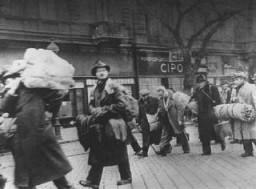
-
Book Burning
ArticleBook burning is the ritual destruction by fire of books or other written materials. The Nazi burning of books in May 1933 is perhaps the most famous in history. Learn more.

-
Bergen-Belsen In Depth: The Camp Complex
ArticleLearn about the sections of the Bergen-Belsen camp complex during WWII and the Holocaust until the camp's liberation by British forces in April 1945.

-
Tattoos and Numbers: The System of Identifying Prisoners at Auschwitz
ArticleLearn more about how the Nazis identified and tattooed prisoners at the Auschwitz concentration camp complex.
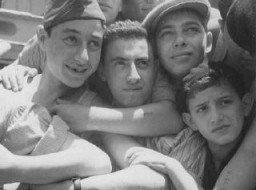
-
Buchenwald
ArticleThe Nazi regime established the Buchenwald camp in 1937. Learn about the camp’s prisoners, conditions there, forced labor, subcamps, medical experiments, and liberation.

-
Children's Aid Society (Oeuvre de Secours aux Enfants)
ArticleDuring WWII, the Children’s Aid Society (OSE) operated 14 children's homes throughout France to save Jewish children from internment and deportation to killing centers.

-
Esterwegen Concentration Camp
ArticleEsterwegen was part of the Nazi regime’s early system of concentration camps, created to hold people arrested as opponents of the new regime.
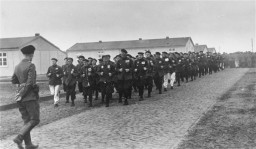
-
Invasion of the Soviet Union, June 1941
ArticleOn June 22, 1941, Nazi Germany invaded the Soviet Union. The surprise attack marked a turning point in the history of World War II and the Holocaust.

-
Polish hostages arrested during the "pacification" of Bydgoszcz
PhotoPolish hostages in the Old Market Square. Bydgoszcz, Poland, September 9–10, 1939. Just after the German invasion of Poland, armed groups of ethnic Germans in the city of Bydgoszcz staged an uprising against the local Polish garrison. This was put down by the next day, one day prior to the entrance of German troops in the city on September 5. A local command structure was quickly put into place by Major General Walter Braemer, and in response to continued attacks upon German personnel in the city,…

-
D-Day
Timeline EventJune 6, 1944. On this date, US, British, and Canadian troops land on the beaches of Normandy, France.
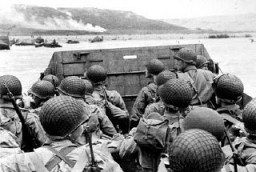
-
Invasion of Poland, Fall 1939
ArticleThe German invasion of Poland in the fall of 1939 triggered WWII. Learn more about key dates and events, causes, and related Holocaust history.
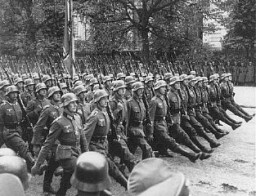
-
Bella Jakubowicz
ID CardBella was the oldest of four children born to a Jewish family in the small city of Sosnowiec, in Polish Silesia. Her father owned a successful knitting factory. In 1938, when she was 12, Bella began attending a private secondary school. 1933-39: When Bella's family returned from vacation in late August 1939, there were rumors of war. Her mother tried to stock up on food but the stores were already out of staples. The Germans took Sosnowiec on September 4; two weeks later they interned all the Jewish men…
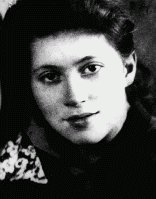
-
Paula Wajcman
ID CardPaula was raised in a religious Jewish family in Kielce, a city in the southeast of Poland. Her family lived in a modern two-story apartment complex. Paula's father owned the only trucking company in the district. Her older brother, Herman, attended religious school, while Paula attended public kindergarten in the morning and religious school in the afternoon. 1933-39: Paula's school uniform was a navy blazer with a white blouse and pleated skirt. At age 9, she did the "Krakowiak" dance at school. Boys…

-
Gertrud Gruenbaum
ID CardBorn to a Jewish father and a Catholic mother, Gertrud grew up in Vienna. Trude, as she was affectionately called, attended a public secondary school, where half of her classmates were Jewish. At age 7 she rejected music lessons for classes in dancing and acting. Trude wanted to be like Greta Garbo. She launched an acting career at age 18, assuming the stage name Trude Hermann. 1933-39: Because Gertrud was Jewish she couldn't get acting jobs in Austria and nearby Sudetenland. In 1937 her agent found work…

-
Andras Muhlrad
ID CardThe second of two children, Andras was born to Jewish parents living in a suburb of Budapest. His father was a pharmacist. The Muhlrads lived in a large house with Andras' grandfather and aunts. As a toddler, Andras often played with his older sister, Eva, and their cousins in the big yard behind their home. 1933-39: Andras was 4 when his family moved to their own apartment. It was 1936 when he began primary school and Hitler had already been in power in Nazi Germany for three years. At night his father…

-
Helen Katz
ID CardThe youngest of eight children, Helen was born and raised in a religious Jewish family living in a town in northeastern Hungary. She was the "baby" of the family and the focus of everyone's hopes and affection. Although her Hebrew name was Hannah, her family called her by her nickname, Potyo, which meant "the dear little one." 1933-39: Helen liked school, but was afraid because some of the kids and teachers hated Jews. There was talk that there might be a war. Her mother wanted them to leave Hungary…

-
Hanandel Drobiarz
ID CardHanandel was raised with his three brothers and sisters in the town of Kozlow, where his family sold grain and livestock. The family was religious, and they observed the Sabbath and all Jewish holidays and dietary laws. When Hanandel was 5, he began studying Hebrew, the Bible, prayers, and Jewish history. 1933-39: At age 14 Hanandel was apprenticed to his uncle in Sosnowiec as a tinsmith. He worked for his uncle during the day and attended trade school at night. When he graduated from trade school he…

-
Shulamit Perlmutter (Charlene Schiff)
ID CardShulamit, known as Musia, was the youngest of two daughters born to a Jewish family in the town of Horochow, 50 miles northeast of Lvov. Her father was a philosophy professor who taught at the university in Lvov, and both of her parents were civic leaders in Horochow. Shulamit began her education with private tutors at the age of 4. 1933-39: In September 1939 Germany invaded Poland, and three weeks later the Soviet Union occupied eastern Poland, where Shulamit's town was located. Hordes of refugees…

-
Hela Szabszevicz
ID CardHela was born in the industrial city of Lodz. She grew up speaking Polish and Yiddish, and learned German and Russian at secondary school. After completing school she married, and moved with her husband to a house on her father-in-law's large estate in the nearby town of Ozorkow. Hela was active in planning events for Jewish organizations. She and her husband, Israel, had two daughters. 1933-39: After German troops occupied Ozorkow in 1939, Hela and her family were forced out of their home and moved in…

-
Rémy Dumoncel
ID CardRémy was born in a small French town to Catholic parents. In 1913, after studying law at the University of Paris, he joined the Tallandier publishing house in Paris. During World War I he served in the French army and was wounded five times. He returned to work at Tallandier after the war, and in 1919 he married Germaine Tallandier, the daughter of the owner. They had five children whom they raised as devout Catholics. 1933-39: In 1935 Rémy became the mayor of Avon, a small town about 35 miles southeast…

